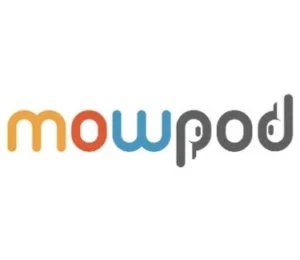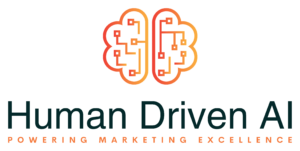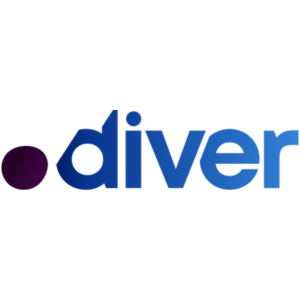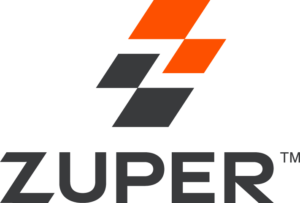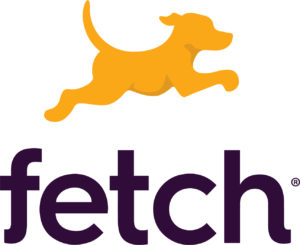How Brands Should Evaluate Podcast Ad Campaigns — Bryan Barletta // Sounds Profitable
Bryan Barletta
Sounds Profitable
- Part 1A Podcast Expert’s Advice on Growth
- Part 2 How Brands Should Evaluate Podcast Ad Campaigns — Bryan Barletta // Sounds Profitable
- Part 3New Wave Podcast Ad Tech — Bryan Barletta // Sounds Profitable
Show Notes
Quotes
-
“Bryan is great at helping people figure out how to evaluate their campaigns. I actually think that that’s the sweet spot here. You actually understand all the tools, the technologies and also the analytics behind it.” - Ben“It’s always good to go over the tools first, so podcasting because it’s based on a download not like a live stream. What we’re dealing with is a service ad to be able to track that, that episode did download and here’s what we know about it.” - Bryan“The most common way to track is using an attribution pixel that is at your service side. You see IP, user agent and the content and it’s often used in figuring out not only impressions or what not but did the person convert on a direct response campaign. The evolution to that is, instead of direct response is a lift report, so, is this over the baseline of what we consider the control whether its the general podcasters, or part of this campaign or a network, was there growth?” - Bryan“The third tool is really brand surveys. It’s being able to ask the audience connected to the campaign or not, the effectiveness of the ad or how they over index with a brand and then how their perception changes when they hear the ad.” - Bryan“There are three ways people are evaluating their campaigns. First off, the service side pixel. When a podcast is downloaded, the server that’s downloading it says, ‘here’s the IP that came and got the content, here’s the user agent meaning here’s the podcast player that we sent it to, and here’s the piece of content that they got. So we’re basically just looking at what a download data is. Directional, and kind of demographic data.” - Ben “When I have an entire week to put these thoughts down, I’m a little bit slower than I am on a podcast.” - Bryan“So the second part is pixeling so right now we’re getting some attribution tracking where we’re able to give brands a pixel, put it on a website and try to match whether the download information we’re getting is the same person that is getting to a website.” - Ben“I don’t think I ever wanna say that podcast attribution is gonna be a person. It’s gonna be at best, a household because your IP address if it’s a cellular IP, it’s garbage. If it’s business, it’s garbage. If it's a household, well that’s everybody in your household. So if I listen to a podcast and then I tell my wife about the ad and she converts from our household where our devices are associated with our household that attribution is going to attribute back to our digital household.” - Bryan“The third way that you mention that brands can figure out whether their podcast ad campaigns are working or simply surveys. Here’s a problem, I have with surveys. If you don’t know who your podcast listeners are, how are you surveying them?” - Ben “There are a few ways to do surveys and it’s similar to the lift reports which is similar to what we talked about before with the attribution. You can do a survey by doing a complete controlled exposure. That means that, I know demographically for a campaign people who make around 150,000 who want to buy a new truck, who live in this area.” - Bryan“So I find people separate completely from the campaign that meet that demographic and then I have them listen to 30-minute podcasts. We split the group in half. One does have the ad in it and the other one doesn’t and then at the end of the survey, I ask them questions about the brand. That’s controlled exposure.” - Bryan“Another one is pre-imposed. Your podcast is probably big enough where you can do pre-imposed where you can ask your audience to fill out a survey so you have specific questions about your podcast and you also add some specific questions about a brand. Then after the campaign runs you also do another post survey. And you do the same thing and you model the two against each other and you can see did the survey provide a brand lift. Did the survey show that the campaign add a positive effect on that audience.” - Bryan“The last one is panel-based which is the brand is big enough to be a household name and your show is big enough to index for people what are the top five podcasts you listen to? And that way it’s saying, “Of podcast listeners that are engaged in surveys, what percentage of them reacted positively to this brand after experiencing the ad natively. Is that a different percent with people that heard it overall? Or is that a different percentage from people that heard it from your show. Surveys are really good for directional but they’re not as exact.” - Bryan“I like direct response marketing and honestly to support our sponsors, we try to show what I call a listen through metric. Somebody that was exposed to your ad that we can track got to your website that’s not a click-through, it’s not the click that’s driving them, it’s our content in the same way that when you see a banner ad and then you go to someone’s site, that’s a view-through metric. I call our exposure to website a listen through and I think that it is directional at best and I also don’t think it captures all the value that the podcast brings because a, you’re creating retargetable data and b, I just don’t think that the tracking is 100% accurate.” - Ben “And honestly getting to the whole nuts and bolts of the whole thing, my problem with podcast advertising where most brands and companies, and even podcasters struggle with is there is no silver bullet in terms of podcast attribution and defining the value created by the podcast, it is partially a brand awareness exposure channel and we don’t have a perfect way of evaluating that because it’s in people’s ears and there’s no click so that creates problems.” - Ben“My takeaway in how brands should evaluate their podcast is you have to triangulate. You gotta look at every single different way a podcast could drive value to try to get a clear picture of whether it’s working or not.” - Ben “I truly believe that all attribution and all surveys and things like this are just directional. We just, as an advertising community, are far more comfortable hanging our hat on what you can do on a webpage or in video than what you can do in any other medium. So we come to podcasting and we look to be able to put our feet up like you can in other avenues especially when you have a big budget behind it. But I think it’s just slightly inaccurate and it’s all directional. In every other channel, it’s still directional.” - Bryan “I don’t think you get that certainty in any channel, right? A great example is social and search rate where it’s all about click but you can’t capture view. You can’t do an impression pixel on Google ads so you miss out on all the people who read it and then you click the actual search results and send to the specific one that had the ad there. You’re still an option for them, you’re still something that influences their decision.” - Bryan“I think that the lift reports and brand studies that take into account the specific podcasts and user control and say, ‘compared to the people you are targeting in that audience or compared to the people that listened to the podcast in general, this directional data shows a directional lift over it and we’re talking double digits often. We’re talking a high enough percentage that that directional data shows that it’s working but I’m not gonna sit here and tell you that you can get the exact one-to-one. I don’t think that you can get that in any channel.” - Bryan“You can’t get the exact one-to-one, you can’t get that in any channel and it’s not as clear of a picture as it would be with a PPC campaign but the medium is an interesting one. You’re getting post-read advertising, you’re getting inferred credibility from the host. You’re able to create a tremendous amount of reach relatively, inexpensively looking at other media forms and the format of the media where it’s longer exposure and how captive the audience is, the recall, the recognition, to me, that’s really the value of podcast advertising.” - Ben
- Part 1A Podcast Expert’s Advice on Growth
- Part 2 How Brands Should Evaluate Podcast Ad Campaigns — Bryan Barletta // Sounds Profitable
- Part 3New Wave Podcast Ad Tech — Bryan Barletta // Sounds Profitable
Up Next:
-
Part 1A Podcast Expert’s Advice on Growth
In this episode, we talked about Bryan’s recommendations on podcasters can start to build their audience within the podcasting marketing channel and other channels outside of that. We also talked about the costs of converting a newsletter into a retargetable podcast list.
Play Podcast -
Part 2How Brands Should Evaluate Podcast Ad Campaigns — Bryan Barletta // Sounds Profitable
In this episode, Bryan talks about how brands can evaluate podcast ad campaigns with pixeling, attribution tracking and various others. We also discussed how it’s all directional in every other channel just like in podcast ads but knowing where the real value of the podcast can help you keep track whether the ad is working or not.
-
Part 3New Wave Podcast Ad Tech — Bryan Barletta // Sounds Profitable
In this episode, Bryan talks about some of the leading and mainstream platforms for podcast advertising and production. We also talk about attribution platform players and the research tools that are up and coming right now.
Play Podcast






